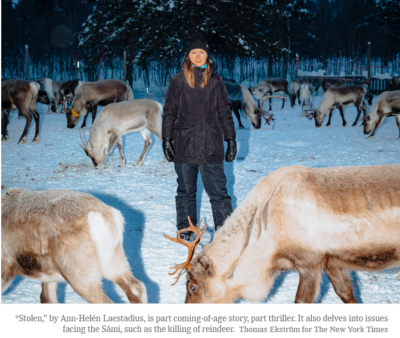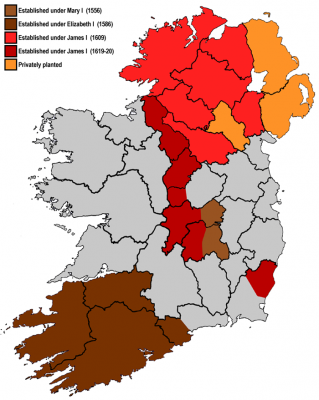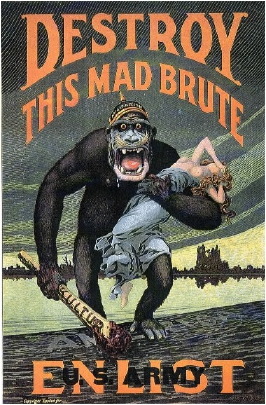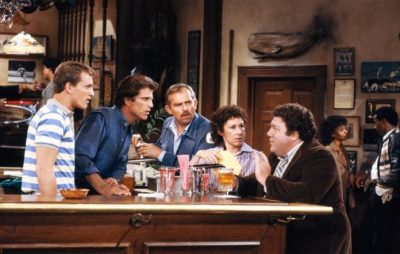
What can Americans learn from indigenous Swedes? In the recent issue of American Historical Review (127:4, 2022), there was an article entitled “Atlantis Restored: Natural Knowledge and Political Economy in Early Modern Sweden” by Carl Wennerlind. Although the article is, in fact, about early modern Sweden, there are lessons to be learned from it for the culture wars in the United States 3-400 years later.
The topic I wish to address is the Sami people of Sápmi, an Indigenous people according to the article better known as Lapps from Lapland. They were people facing internal colonization by the Swedes. Some Swedish reformers thought that violence would not be necessary. “The benign force of science would transform the northern provinces into thriving communities.”
Carl Linnaeus (1707-1778), Sweden’s most influential improvement writer, is best known for his botany and classification system. His most formative journey was to Sápmi in 1732. He was stuck by the “abundance of natural resources and inspired by the way the Indigenous population lived.” He saw Sápmi as a “repository of new and exotic knowledge and resource, all of which ought to be exploited through settler colonialism.” They were a “’new frontier’” and a “’new world on the threshold of old Europe.’”
Linnaeus was deeply impressed by the Sami.
He viewed them as the closest living relatives to the Goths, the idealized population of Scandinavia and thus the repository of ancient purity and simplicity.
He extolled their way of life in contrast to the way the average Swede lived who:
“eats like an Englishman, drinks like a Dutchman, takes snuff like a Spaniard, and guzzles vodka like a Russian.” Swedes should live like Swedes, the only surviving example of which were the Sami.
Despite these glowing words for Sweden’s “’noble savages,’” he classified them as Homo monstrosus and referred to them as Alpine dwarves. According to Wennerlind, the hierarchical classification system of distinct racial categories which Linnaeus used, laid the foundation for scientific racism. He sought to improve the status of the Sami using then modern civilized methods. However much to his regret, the “Sami resisted progress and their stubborn insistence on retaining their independence trumped any inclination toward bettering their own condition.”
Linnaeus’s efforts at the improvement of Sweden should be understood with the geopolitics of its time. He endeavored to restore Sweden’s glory days in the wake of the rise of new empires. One should recall that there once was a New Sweden here in the United States.
The Sámi (as they are spelled by The New York Times) were the feature of a huge article in paper, “Writing the Tale of Her People,’ (2/1/23, print). They were on the front page of the Arts Section and a full page (7) on the inside. The subject was Carl Linnaeus and her novel Stolen. She is identified as Indigenous and shown surrounded by reindeer who are to her people as buffalo and whales are to other Indigenous people.
The success of her novel is forcing Sweden to learn a lesson from its long and oppressive colonization of the Sámi people. According to the article, they number around 80,000 and inhabit lands stretching across multiple counties in the Arctic. Their language and culture have been forcibly suppressed by these multiple government. They have stripped the Sámi of their land rights and have their livelihoods and cultures threatened by the development of industry. No surprise, they are actively involved in multiple law suits and political conflicts to protect their way of life.
The rest of the article tells of the development of Laestadius as an author and the growing acceptance of Sami artists in the European cultural world. Her book is becoming a film for Netflix. In the meantime, she has raised the visibility of reindeer kills as an act of violence against her people.
Many of the descriptions in the journal article and the newspaper article are eerily similar to the way Indigenous people are described and acted upon here in the United States.
One question which has not been raised is if, or when, Sami, migrate to the United States, how are they classified according to our racial classification system? The two authors of the journal article and the newspaper article routinely classify them as “Indigenous” although there is nothing to indicate that the Sami themselves use that term for themselves. After all, they have a proper noun name. So if they emigrated to America and listed country of origin as Sweden or Norway, it is quite possible that would be designated as “white” and lose their “Indigenous” status.
Other articles from The New York Times indicate the same question: people are identified as “Indigenous” which raises the question of how they would be classified if they emigrated to the United States. Here are some examples from the different countries I read about in my print editions this year.
January 28: Chile – Indigenous rapper of the Mapuche, the country’s largest Indigenous group. The article is about the vote on the new Constitution and Indigenous rights. More than 80% of Chile’s 2 million Indigenous are Mapuche who have been struggling against European colonizers for five centuries in defense of their land, their language, their way of life (earlier full page article September 3, 2022)
January 28: Peru – Indigenous Aymara as part of large-scale political turmoil in the country; see also Quechua being added to Google translate June 1, 2022)
February 25: Africa – Indigenous as a term used by French soldiers to refer to African conscripts in World War I
April 8: Guatemala – Indigenous Maya holding on to their culture and language; see also Indigenous Mayan women in Mexico playing softball, November 18, 2021, full page)
May 16 (full page): Paraguay – Espinillo Indigenous community
Qom Indigenous group: “It’s like we were animals to be bought” referring to the practice of “’herding’” them into “’corrals’” for voting
Enxet Sur
May 19 (full page): Poland – “It has long been known that Nordic warriors established outposts more than a millennium ago on Poland’s Baltic coast, enslaving Indigenous Slavic people to supply a booming slave trade…” One should keep in mind that it is from these raids that the Indigenous Slavic people became equated with their social position generating the word “slave.”
May 27 (full page): Columbia – Indigenous Emberá and Afro-Columbian Black people
So when an article on the science fiction book Dune by Frank Herbert describes his sources as ranging from Greek mythology to Indigenous cultures, which Indigenous cultures did the author mean (October 21, 2021)?
When an author writes about the impact on the Atlantic coastal region in Newfoundland refers to the Irish, Scottish, English, French, and Indigenous influences, how come the white Europeans are identified by proper noun names and the Indigenous people are not?
In this sample, I deliberately restricted myself to Indigenous peoples in Europe and South America and excluded peoples in Africa and North Africa. That is for another blog.
So what are the lessons to be learned here?
1. The journal and newspaper I read both were in print. If I received them only online, it is unlikely I would have read all these articles and made all these connections. By turning the page of the newspaper, my eye was naturally drawn to the full-page and front-page articles with pictures which I would have skipped if I only saw a headline caption on the front page. Even with the journal article, by thumbing through the physical journal, I noticed more than I would simply by reading the table of contents. In other words, online subscriptions to newspapers and journals promotes silo thinking.
2. Indigenous is not a helpful term as a means of identifying people. The people labelled as “Indigenous” is this same might be considered white, Hispanic, or Indigenous here in the United States. All three identifications pose problems and can generate confusion.
3. This review of the use of the term “Indigenous” as a proper noun exposes its shortcomings. It is a characteristic and not a name. Imagine if the term “immigrant” suddenly became the name of peoples. Or how about “refugees”? Which political party benefits most from these shortcomings?
The academic embrace of a term with such shortcomings poses a danger now that it has entered the public arena just as happened with the academic term “critical race theory.”










